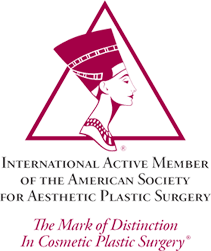Nose Job - Rhinoplasty in India
Certifications


Surgery for the Nose
Surgery for the Nose or Rhinoplasty is done to improve the shape and or function of the nose and is one of the most popular cosmetic surgery procedures worldwide. It can be carried out to make the nose look smaller or bigger, improve the alignment of the nose or improve the shape or size of the nostrils. The skin of the nose is separated from the bone and cartilage and the bone and cartilage is reshaped surgically to give the desired result. There are several techniques of doing this and your surgeon will choose the most appropriate one for you.
From what is known, the first successful rhinoplasty was carried out in India in 600 B.C. An Indian surgeon named Sushata Samhita used surgery and skin reconstructions to improve the shape of noses that had been injured or cut off as a way of punishment for thieves in India during this period of time.
It is a surgical procedure to reshape your nose to improve its appearance and proportion in relation to your other facial features. People most often elect surgery to alter the size and shape of the bridge and tip of the nose. This can be just because they do not like the shape of the nose, or damage due to trauma to the nose or a birth defect.
Ideally rhinoplasty should not be done before 15-16 years of age as before this age the bones of the face and nose are still growing. By the mid-teens the facial bones have reached their full mature size and shape. After this age rhinoplasty can be done at any age as long as the person is in good general health.
Rhinoplasty can be done by the open or closed technique. This will depend on where the incisions are made. The surgeon will follow the technique which he feels would be best suitable for you.
Reshaping is generally done through incisions inside the nose. There may also be an incision passing across the central portion of the nose between the nostrils. This entails removing small wedges of skin at the base of the nostrils. The resulting scars usually fade very well and ultimately should be barely noticeable.
The nose is reduced, or in some cases built up, by adjusting it's supporting structures-either removing or adding bone and cartilage. The skin and soft tissues then redrape themselves over this new scaffolding.
In some instances, there may be an internal deformity of the nose that can affect the breathing. This may be due to an irregularity in the septum (the central structure of cartilage and bone that separates the two sides of the nose) or the turbinates (structures protruding internally from the lateral walls of the nose). Adjustment of these structures to improve the nasal airway may be made at the same time as alterations to the external appearance of the nose.
After surgery, some pain, swelling and bruising of the nose is to be expected, but will subside gradually. Pain can be controlled by simple analgesics. You will need to wear a splint for about a week to ten days and can wear cosmetics to cover any mild bruising after it is removed. Normal day to day activity can be resumed within a few days but you will need to avoid strenuous activity and contact sports for about 2-3 weeks. You are also advised against activities that increase your blood pressure like bending, lifting heavy objects etc. for about 2-3 weeks.
Result
After surgery it takes a considerable time for the tissue to heal and the swelling and edema to settle to reveal the new shape of the nose. For this reason do not make any judgment on the on the result of your surgery for several months, even a year after surgery, until the tissue healing is complete.
Often the best compliment you can receive from your family and friends is that your nose does not appear very different. Remember-the intention of Rhinoplasty is for your "new nose" to blend in naturally with your face.
Revision Rhinoplasty
Revision rhinoplasty is performed to correct problems that develop or continue after a previous rhinoplasty. Also known as Tertiary or Secondary Rhinoplasty, this procedure is to correct a previous unsuccessful surgery of the nose.
If the problems are minor they can be easily corrected. In most cases a revision rhinoplasty is more difficult and requires more surgical expertise and experience than the first surgery. This is due to the fact that the normal tissue and anatomy of the nose is no longer intact and is replaced with scar tissue from the first surgery. This scar tissue is tougher than normal tissue and is difficult to separate from the nasal bone and cartilage.
Reassuringly in most cases, in the hands of an experienced surgeon, revision rhinoplasty will provide significantly improved results. Revision rhinoplasty , is considered one of the most challenging surgeries in the field of facial plastic surgery and is being successfully done at Image Medical Center.
Dr. Anup Dhir is one of the leading surgeons performing rhinoplasty in India



